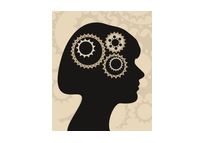by Mélisande Rouger
Speakers discussed sex differences in patients with neurological disorders and how they impact clinical outcomes on the third day of EAN 2024, the 10th Congress of the European Academy of Neurology (EAN) that is still unfolding in Helsinki, Finland.
“There is growing awareness that there are gender differences in all aspects of the diagnosis and management of neurological diseases,” said Prof. Marianne de Visser from Amsterdam University Medical Center, the Netherlands, as she opened the discussion that took place in the EAN TV studio.
…
Stroke: An Unacceptable Gap in Incidence and Access to Care
Dr Valeria Caso from the Santa Maria de la Misericordia Hospital in Perugia, Italy focused on the risk factors, prevention, and treatment of stroke.
“There are differences due to gender issues in stroke, but we can solve this,” she said.
Although incidence of stroke is going down, it is going to rise in younger women, mainly due to smoking habits, consumption of processed food and sensitivity to pollution, she predicted.
“We treat older ladies in their 90s very well, but we’re not doing so well with the youngest,” she said. “Women have a 25% lifetime risk of having stroke and it goes up to 36% in eastern Europe. This is much higher than men and that is absolutely unacceptable”.
Once in the acute stroke unit, patients receive the same treatment regardless of gender, but there is a delay in onset to door and onset to endovascular treatment for women. “That is also unacceptable,” Caso said. “Women are often underestimated at stroke risk, and the features are not so clear compared with men (…) The same goes with recurrence risk, which is higher in women”.
Neurologists have to learn that there is a specific biological substrate for women, she argued. “When we have a pregnancy related disease, then we have a higher risk of stroke,” she explained. “I learned to ask my patients about clamps and pre clamps, which I never did before”.
This not only about conventional risk factors, she went on. “We know that women have more atrial fibrillation and hypertension, because we live our lives as hypotensive. Then the menopause comes and our bodies change so dramatically. Women are not aware of this and we have to share this with them”.
After 65, healthcare professionals have to teach women to take their pulse, because they will have a higher risk of having a stroke and they will be undertreated. “They have to ask for stroke treatment,” she said.
Regarding access to care, if there is a gender inequality index, women have a higher risk for stroke. “That is again unacceptable! If women don’t have the right to have a passport, can’t travel without a man or there’s no legislation against domestic violence, then they have a clearly higher risk for stroke”.
Women are also more likely to have poorer quality of life after stroke, with more cognitive decline and depression. “While a man when he is 80 still has muscles, women have tissue which is very difficult to recover, so it’s important to teach women to age healthily,” she added.
To improve prevention, women should be taught to take better care of themselves. “All our lives, we tend to give care to others and forget that our brain health is the most important part,” she said. “You need to be healthy to help others.”
Differences in Parkinson’s Disease and Myasthenia Gravis
Dr Haidar Dafsari from Cologne University in Germany touched on gender differences in Parkinson’s disease (PD), focusing on deep brain simulation (DBS) treatment.
“We know from the literature that PD is more prevalent in men than women, and the gender ratio is 1.48 men to 1 woman,” he said. “But women are also disproportionately less likely to receive DBS surgery than men. At our centre, the ratio over 5.5 years was 2 to 1”.
Before DBS surgery, patients come to the hospital, where doctors run tests and try to identify good candidates for the treatment. “102 women and 214 men were referred to us. Women were disproportionately less frequently referred than men.”
Preoperatively, mean duration was also longer and dyskinesia more severe in women with PD. Nonetheless, DBS was equally efficient on total life quality, non-motor and motor symptoms in women and men with PD, he observed.
“The gender bias is not a local but a systematic effect, and it has also been observed in cohorts in Europe and the USA,” he said. “Future studies in gender medicine should focus on the decision making process rather than the decisions’ end results, which may help to understand and influence these gender disparities”.
The last speaker, Dr Jana Zschüntzsch from Göttingen University, Germany, explored differences in myasthenia gravis, an autoimmune disease characterised by antibodies directed against the host synaptic membrane of the ostheomuscular junction, leading to muscle weakness.
“There is growing evidence that gender differences influence diagnosis, treatment and the long-term course of myasthenia gravis,” she said. “At onset of the disease, women are affected by a more generalised version of the disease compared to men, who often exhibit ocular form that may be faster to diagnose”.
The general form of the disease, which tends to be less diagnosed, together with early onset in women, who typically peak in the second to fourth decade of their lives, led to higher impact of the disease in women than men.
“We need more awareness among the population,” she concluded. “For women, some diseases bring you a bit behind for a certain amount of time”.











